This article needs additional citations for verification. (August 2007) (Learn how and when to remove this template message) |
Dhol (Hindi: ???, Punjabi: ???, Urdu: ??????, Assamese: ???, Gujarati: ???, Marathi: ???, Bengali: ???) can refer to any one of a number of similar types of double-headed drum widely used, with regional variations, throughout the Indian subcontinent. Its range of distribution in India, Bangladesh and Pakistan primarily includes northern areas such as the Punjab, Haryana, Delhi, Kashmir, Sindh, Assam Valley, Gujarat, Maharashtra, Konkan, Goa, Karnataka, Rajasthan and Uttar Pradesh. The range stretches westward as far as eastern Afghanistan. A related instrument is the dholak or dholki.
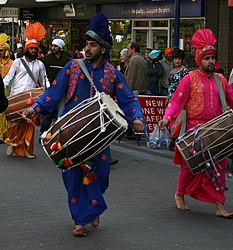 | |
| Other names | ???, ????, ???, ???, ??? |
|---|---|
| Classification |
Membranophone |
| Related instruments | |
|
Dholki | |
| More articles | |
|
Garba, Bhangra, Music of Punjab, Bihu Dance | |
A dhol
| |
Problems playing this file? See media help. | |
Someone who plays the dhol is known as dholi (Punjabi: ????) or dhuliya (Assamese: ???????).
Contents
Construction
The dhol is a double-sided barrel drum played mostly as an accompanying instrument in regional music forms. In qawwali music, the term dhol is used to describe a similar, but smaller drum used with the smaller tabla, as a replacement for the left hand tabla drum. The typical sizes of the drum vary slightly from region to region. In Punjab, the dhol remains large and bulky to produce the preferred loud bass. In other regions, dhols can be found in varying shapes and sizes and made with different woods and materials (fiberglass, steel, plastic). The drum consists of a wooden barrel with animal hide or synthetic skin stretched over its open ends, covering them completely. These skins can be stretched or loosened with a tightening mechanism made up of either interwoven ropes, or nuts and bolts. Tightening or loosening the skins subtly alters the pitch of the drum sound. The stretched skin on one of the ends is thicker and produces a deep, low frequency (higher bass) sound and the other thinner one produces a higher frequency sound. Dhols with synthetic, or plastic, treble skins are common.
Playing
The dhol is played using one or two wooden sticks, usually made out of bamboo and cane wood. The stick used to play the bass side of the instrument, known as the dagga in Punjabi, is thick (roughly about 10 mm in diameter) and is bent in a quarter-circular arc on the end that strikes the instrument. The other stick, known as tihli, is much thinner and flexible and used to play the higher note end of the instrument.
The dhol is slung over the neck of the player with a strap usually made up of woven cotton. The surface of the wooden barrel is in some cases decorated with engraved patterns and sometimes paint.
In the pre-Partition era, dozens of rhythms were played on the Punjabi dhol, which corresponded to specific functions. However, with the decline or disappearance of some cultural practices, recent generations of dhol-players have become unfamiliar with many of these. At the same time, the growth of folkloric staged bhangra dance in Punjab inspired the creation of many new rhythms particular to that dance.
Some of the most common Punjabi dhol rhythms are bhangra (originating with the old, community bhangra dance), dhamaal (associated with many cultural functions, including worship at Sufi shrines), and kaharva, a dance and song rhythm. The staged "bhangra" dance, originating in the 1950s, gave special prominence to kaharva, for the performance of actions called luddi. In the 1970s, many more actions were added to staged bhangra to go with the kaharva rhythm, which started to become one of the most prominent rhythms associated with the dance. At the same time, this type of rhythm would be played on the dholki drum to accompany Punjabi songs. So when, in the 1990s, Punjabi pop songs began to evoke bhangra dance, they used the kaharva rhythm. It is known now by various names. Some dhol-players call it kaharva, its technical name, while other players in Punjab call it luddi to refer to the dance of that name. With the style of dhol-playing that developed in the U.K., the name chaal was adopted—probably in reference to the "chaal" movements it accompanies in modern bhangra—however, that term is not used elsewhere.
The introduction of electronic devices such as tape recorders has led to a decline in the importance of dhol players in celebratory events. Nevertheless, dhol music still figures in the studio recordings of present-day raas, garba and bhangra music artists.
History
The dhol is a drum that dates back to the 15th century. It was probably introduced to the Indian subcontinent via the Persian drum type dohol (duhul). Evidence for this is found in Ain-i-Akbari, which describes the use of duhul in the orchestra of the Mughal emperor Akbar the Great. The Indo-Aryan word "dhol" appears in print around 1800 in the treatise Sangitasara.
Relation to other drums
A similar but distinct family of drums with similar names appears in Iran (Persian: ????), Armenia (Armenian: ????), and states of Central Asia like Afghanistan, as well as in the Balkans where they are known as davul and in Kurdish as dawol.
Regional forms and traditions
The Punjab region
The Punjabi dhol is used in the Punjab region of Pakistan and northern India. In Pakistan, the dhol is predominantly played in the Panjab region; however, it is also used throughout the country ranging from as south as Karachi and as north as Khyber Pakhtunkhwa. In India it is found in the states of Punjab, Himachal Pradesh, Haryana, and Delhi. The beats of dhol have been an element in the ceremonies of the great Sufi mystics and their followers. The patterns of dhol have been developed to catalyze the mind of the devotee who is seeking spiritual trance. Traditionally the Punjabi dhol has been the domain of men.
Assam
In Assam, the dhol is widely used in Rongali Bihu (Bohag Bihu), the Assamese new year celebrations in the month of April. Celebrated in mid-April every year (usually on 14 or 13 April according to Assamese traditional calendar), the dhol is an important and a quintessential instrument used in Bihu dance and is very similar to drums used in China. There is a similar festival of playing waist drums in China known as "Ansai Waist Drum Dance". The origin of the Dhol in Assam dates back to atleast the 14th century where it was referred in Assamese Buranjis as being played by the indigenous people. This shows that the origin of Dhol in Assam was much older than the rest of India, and the name was probably due to sanskritisation. The people of the Valley reckon that the beats of the dhol are enchanting for people even at a long distance. Played by using a bamboo stick with bare hands, the Assamese dhol is made up of wooden barrel with the ends covered primarily with animal hide (unlike the rest of the Indian subcontinent, where it could be a synthetic skin as well), that can either be stretched or loosened by tightening the interwoven straps. The dhol player is termed as Dhulia and the expert in dhol is termed as Ojah (Assamese : ???).
The dhol also has an aspect of symbolism in Assamese culture, and one considers it to be a "devo badyo" (Assamese: ??? ?????) or an instrument of god believed to be brought to Earth by the Pandavas.[5]
Goa
Dhol (which is always accompanied by tasha, cymbals, etc.) is an important part of Goan shigmo celebrations.[6] It also is an important part of Goan temple music; the temple dhol was traditionally played by a specific caste.[7]
Gujarat
The dhol was used by Gujaratis during celebrations such as Navaratri to accompany garba. Garba are the folk songs which describe the grace of the divine mother. It is one of the important musical instruments in Gujarat.
Maharashtra
In Maharashtra, dhol is a primary instrument used in Ganesh festivals. In the city of Pune, locals come together to form dhol pathaks (troupes). Pune supposedly has the largest number dhols in India. In the city of Nagpur, there are many troupes, play dhol in festivals and other occasions. Here dhol is referred to as 'Sandhal'. Dhol is made up of two stretched membranes tied by strong string. One side of dhol is played by wooden stick called "tiparu", on that side black coloured ink paste stick in the centre. This membrane is called the "dhum". In technical language it is called base. Another side of dhol is called "thapi" or "chati". In technical language it is called as tremer, this side of membrane is only played by palm. Boll of the dhol is "Dhin" and "Taa". "Dhin" for the "Dhum" side and "Taa" for the "Thapi" side.
Karnataka
Called dhollu in Kannada, it is accompanies a folk dance form known as Dollu Kunitha and is performed by the people of the Kuruba caste of Karnataka.[citation needed
Watch movie Dhol online on Amazon
Watch movie Dhol online
Watch The Movie On PrimeMuskaan Full HD Movie Download
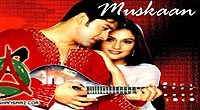
Shriman Satyawadi Full HD Movie Download
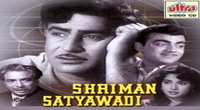
Dr Vidya Full HD Movie Download

Lorie Full HD Movie Download
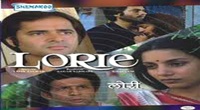
Hostel Full HD Movie Download

Apne Rang Hazar Full HD Movie Download
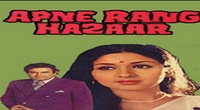
Qaid Full HD Movie Download
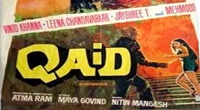
Kismat Konnection Full HD Movie Download
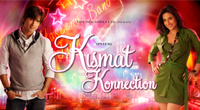
Harishchandrachi Factory Full HD Movie Download
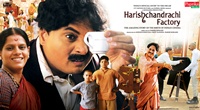
Ahista Ahista (2006) Full HD Movie Download
.jpg)
Amar Deep Full HD Movie Download
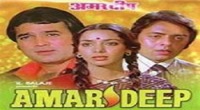
Tum Se Achcha Kaun Hai (1969) Full HD Movie Download
.jpg)
Nasha Jism Ka Full HD Movie Download
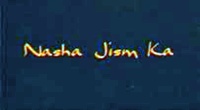
Pyasi Chudail Full HD Movie Download
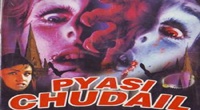
Iddaru Pellala Muddula Police Full HD Movie Download
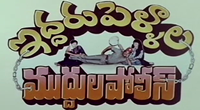
Chetabadi Full HD Movie Download
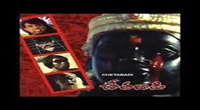
Meri Adalat Full HD Movie Download

Miss Congeniality Full HD Movie Download

Andha Oru Nimidam Full HD Movie Download
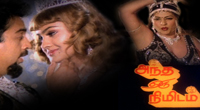
Josh Full HD Movie Download

Priyaragalu Full HD Movie Download
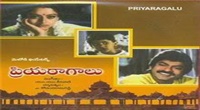
Download latest Movie from bollywood
- 1> baaghi 3
- 2> THE SKY IS PINK MOVIE FULL STORY AND REVIEW
- 3> Luka Chuppi
- 4> TO ALL THE BOYS I’VE LOVED BEFORE
- 5> Kabir Singh
- 6> Street Dancer 3D
- 7> Simmba
- 8> Gone Girl
- 9> The Girl Who Lived
- 10> Ludo
- 11> DILWALE DULHANIA LE JAYENGE
- 12> GUILTY
- 13> The Godfather
- 14> Adventures of Rusty
- 15> Sooryavanshi
- 16> Satyameva Jayate 2
- 17> Thappad
- 18> Bhool Bhulaiyaa 2
- 19> KGFChapter 2
- 20> Mardaani 2
- 21> Pinjar
- 22> Shivaji maharaj
- 23> Ek Villian 2
- 24> Hungama 2
- 25> Divergent
- 26> Mumbai Saga
- 27> The Internship
- 28> HIT (telugu)
- 29> Panga
- 30> The perfect date
- 31> 16 December
- 32> Gopala Gopala (Telugu)
- 33> Brahmastra
- 34> Gangubai Kathiawadi
- 35> Manmadhudu
- 36> Nenu local
- 37> Mahanati
- 38> Shatamanam bavathi
- 39> Lagaan
- 40> After
- 41> MOM
- 42> Shamshera
- 43> Raguvaran BTech
- 44> Khakee
- 45> The villain
- 46> OM
- 47> Mr. perfect
- 48> Bueatifull mind
- 49> Hichki
- 50> Gabbar Singh
- 51> Jogi
- 52> Before Sunrise
- 53> Before Sunset
- 54> Before Midnight
- 55> The Big Bull
- 56> Top Gun: Maverick
- 57> The Purge
- 58> The Sky is Pink
- 59> Laxmmi Bomb
- 60> Sadak 2
- 61> Sufna
- 62> Prithviraj
- 63> PK
- 64> Coolie No 1(2020)
- 65> Black Widow
- 66> Dear Zindagi
- 67> Dil Bechara
- 68> PHIR HERA PHERI
- 69> WAR
- 70> Dostana
- 71> RRR: Roudram Ranam Rudhiram
- 72> Maidan
- 73> Dabbang 3
- 74> Chhalaang
- 75> life as we know it
- 76> SherShaah
- 77> Sandeep Aur Pinky Faraar
- 78> Event Horizon
- 79> 83
- 80> Radhe: Your Most Wanted Bhai
- 81> Gunjan Saxena: The Kargil Girl
- 82> Mr India
- 83> Vivah
- 84> Anokha Bandhan
- 85> Ghost
- 86> Bhoot: Part One - The Haunted Ship
- 87> Haseen Dilruba
- 88> Laal Singh Chaddha
- 89> Qismat
- 90> Rajput
- 91> Drive
- 92> Dil Chahta Hai
- 93> Dil Ki Baazi
- 94> Dil Ka Rishta
- 95> Teesri Manzil
- 96> Dil
- 97> Love Aaj Kal
- 98> Khaali Peeli
- 99> Bunty Aur Babli 2
- 100> Atrangi Re
- 101> Gulabo Sitabo
- 102> Jodi
- 103> Suraj Pe Mangal Bhari
- 104> Deewana
- 105> Attack
- 106> Sardar Udham Singh
- 107> Toofan
- 108> THE LOVEBIRDS
- 109> Jersey
- 110> Ginny Weds Sunny
- 111> Thalaivi
- 112> Shiddat
- 113> Angels vs Zombies
- 114> Koi Mil Gya
- 115> Thank God
- 116> Bhuj: The Pride of India
- 117> Hum Aapke Hain Kaun
- 118> The Platform
- 119> Bird Box
- 120> Roohi Afzana
- 121> Torbaaz
- 122> Nikamma
- 123> World War Z
- 124> Extraction
- 125> Train to Busan
- 126> Life of Pi
- 127> SHAADI MEIN JROOR AANA
- 128> Himmat Aur Mehnat
- 129> To All The Boys: P.S. I Still Love You
- 130> Mimi
- 131> Good Newwz
- 132> Shubh Mangal Zyada Saavdhan
- 133> Raabta
- 134> Harry Potter and the Philosopher's Stone
- 135> Harry Potter and the Chamber of Secrets
- 136> Chhapaak
- 137> War of the Worlds
- 138> Harry Potter and the Prisoner of Azkaban
- 139> Harry Potter and the Goblet of Fire
- 140> MURDER MYSTERY
- 141> Shakuntala Devi
- 142> Bachchan Pandey
- 143> Jayeshbhai Jordar
- 144> Sheer Qorma
- 145> Saina
- 146> 'O' Pushpa I hate tears
- 147> Kedarnath
- 148> MS Dhoni The Untold Story
- 149> Chhichhore
- 150> Badhaai Ho
- 151> Unstoppable
- 152> Oz the Great And Powerful
- 153> The Girl on the Train
- 154> Haathi Mere Saathi 2020
- 155> The Conjuring: The Devil Made Me Do It
- 156> Gandhi Se Pehle Gandhi
- 157> The Song of Scorpions
- 158> Srimanthudu
- 159> Hello Guru Prema Kosame
- 160> Beauty and The Beast
- 161> Black Panther
- 162> Charlie and the Chocolate Factory
- 163> Bole Chudiyan
- 164> Fidaa
- 165> Duvvada Jagannadham
- 166> Bruce Lee: The Fighter
- 167> Hyper
- 168> Yaara
- 169> Red (2020)
- 170> Shivam
- 171> That Is Mahalakshmi
- 172> Nishabdham
- 173> Aashram 2020 web series
- 174> Laxmii
- 175> Mismatched
- 176> STUDENT OF THE YEAR 2
- 177> NAIL POLISH
- 178> Ramprasad Ki Tehrvi
- 179> KAAGAZ
- 180> 12 o Clock
- 181> The Power
- 182> bolo hau
- 183> Tribhanga
- 184> JAMUN
- 185> Madam Chief Minister
- 186> Maasaab
- 187> Aadhaar
- 188> Tanhaji
- 189> Bhaagi 3
- 190> Bhootnath
- 191> MALANG
- 192> Jai Mummy Di
- 193> Haathi Mere Saathi 2021
- 194> Shakeela
- 195> Unpaused
- 196> Annayya
- 197> Vamsoddharakudu
- 198> Mrugaraju
- 199> Narasimha Naidu
- 200> Sankranti
- 201> Manasu Maata Vinadhu
- 202> Anjaane
- 203> Apaharan
- 204> Bachke Rehna Re Baba
- 205> Bewafaa
- 206> Roohi
- 207> Radhe
- 208> Zindagi Khoobsoorat Hai
- 209> Yeh Mohabbat Hai
- 210> Yeh Kya Ho Raha Hai?
- 211> The Tomorrow War
- 212> DehradunDiary
- 213> Meri Shaadi Karaoo
- 214> Matruu Ki Bijlee Ka Mandola
- 215> No One Killed Jesica
- 216> Aag Ka Goola
- 217> Eight Million Dollars
- 218> Three Hundred
- 219> Cats and Dog
- 220> Decoy
- 221> Gold Rush
- 222> You Have Got Mail
- 223> Final Destination three
- 224> Tofan
- 225> Jungle
Request for Download movie Dhol
- Bollywood movies
- Latest Bollywood movies
- Download all bengali movies
- Download all bhojpuri movies
- Download all english movies
- Download all gujarati movies
- Download all hindi movies
- Download all kannada movies
- Download all malayalam movies
- Download all marathi movies
- Download all oriya movies
- Download all punjabi movies
- Download all tamil movies
- Download all telugu movies
- Bollywood action movies
- Bollywood adventure movies
- Bollywood animation movies
- Bollywood classical movies
- Bollywood comedy movies
- Bollywood crime movies
- Bollywood devotional movies
- Bollywood documentary movies
- Bollywood drama movies
- Bollywood family movies
- Bollywood fantasy movies
- Bollywood historical movies
- Bollywood history movies
- Bollywood horror movies
- Bollywood musical movies
- Bollywood mystery movies
- Bollywood mythological movies
- Bollywood patriotic movies
- Bollywood romance movies
- Bollywood romantic movies
- Bollywood sci-fi movies
- Bollywood social movies
- Bollywood spiritual movies
- Bollywood sports movies
- Bollywood suspense movies
- Bollywood thriller movies
- Bollywood war movies
- Hot actress list
- Hot gujarati actress list
- Hot tamil actress list
- Hot bhojpuri actress list
- Hot assam actress list
- Hot bihari actress list
- Hot jammu and kashmir actress list
- Hot gujarati actress list
- Hot haryana actress list
- Hot konkani actress list
- Hot marathi actress list
- Hot odia actress list
- Hot punjabi actress list
- Hot rajasthani actress list
- Hot kannada actress list
- Hot malayalam actress list
- Hot telugu actress list
- Hot tulu actress list
- Hot Actress list from Indian city
- Hot actress list from ahmedabad
- Hot actress list from alappuzha
- Hot actress list from bangalore
- Hot actress list from bangalore
- Hot actress list from bhopal
- Hot actress list from chandigarh
- Hot actress list from chennai
- Hot actress list from guwahati
- Hot actress list from hyderabad, india
- Hot actress list from indore
- Hot actress list from jaipur
- Hot actress list from kannur
- Hot actress list from kochi
- Hot actress list from kolkata
- Hot actress list from kollam
- Hot actress list from kottayam
- Hot actress list from kozhikode
- Hot actress list from lucknow
- Hot actress list from madurai
- Hot actress list from mangalore
- Hot actress list from mumbai
- Hot actress list from mysore
- Hot actress list from new delhi
- Hot actress list from patna
- Hot actress list from pune
- Hot actress list from thiruvananthapuram
- Hot actress list from thrissur
- Hot actress list from tiruchirappalli
- Hot actress list from vijayawada
- Hot actress list from visakhapatnam
- All Bollywood Movies
- Bollywood Celeb
- >Art Director
- >Audiography
- >Background Music
- >Banner
- >Choreographer
- >Cinematographer
- >Costume Designer
- >Dialogue Writer
- >Director
- >Distributor
- >Editor
- >Executive Producer
- >Hair Stylist
- >Lyricist
- >Music Director
- >Photographer
- >Playback Singers
- >Presenter
- >Producer
- >Production Company
- >Production Designer
- >Screenplay
- >Singer
- >Sound
- >Actor
- >Story Writer
- >Studio
- >Video Director
- >Miscellaneous
- >Publicity (pro)
- >Web Creator
- >Production Labs
- >Publicity Design
- >Publicity Stills
- >Writer
- >Miscellaneous Artists
- >Visual Effects
- >Reporter
- >Music Company
- >Shooting Studios
- >Picturised On
- >Line Producer
- >Co Producer
- >Asst Director
- >Casting Director
- >Cinematography
- >Choreography
- >Dialouge
- >Editing
- >Lyrics
- >Music
- >Story
- >Playback Singer Female
- >Playback Singer Male
- >Actor In A Comic Role (male/female)
- >Child Artiste
- >Ensemble Cast
- >Actor Popular Choice (male)
- >Actor Popular Choice (female)
- >Sa Re Ga Ma Pa Song Of The Year
- >Actor In Supporting Role
- >Actress In Supporting Role
- >Actor In Leading Role
- >Art Direction
- >Actress In Leading Role
- >Sound Recording
- >Costume Design
- >Special Effects
- >Action
- >Actor In A Negative Role
- >Lifetime Achievement Award
- >Cinematic Exellence (director)
- >Cinematic Exellence (male)
- >Cinematic Exellence (female)
- >International Male Icon
- >International Female Icon
- >Actor In A Supporting Role (male)
- >Actor In A Supporting Role (female)
- >Actor In A Comic Role
- >Playback Singer (male)
- >Playback Singer (female)
- >Most Promising Debut (female)
- >Most Promising Debut (male)
- >Most Promising Director
- >Sound Design
- >Lifetime Jodi
- >Marketed Film
- >Jury Award For Best Actor
- >Jury Award For Best Actress
- >Jury Award For Best Film
- >Jury Award For Best Director
- >Playback Singer(male)
- >Lifetime Acheivement Award (male)
- >Excellence Award
- >Jodi Award
- >Performer Of The Year
- >Presented By
